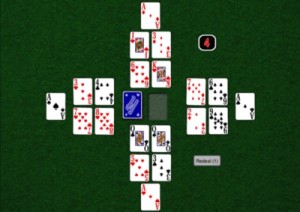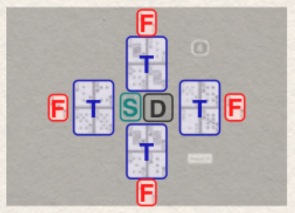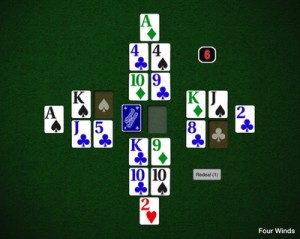Corners
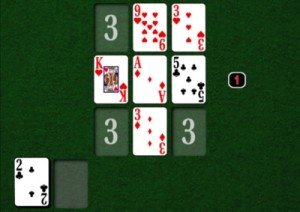
Corners combines simple rules, with a mixed layout,
allowing a great mix of luck and strategy.
Corners always has a special place in my heart, as it’s one of the first games I learned, and has a nice symetric layout, mixing foundations and tableau piles in the same grid.
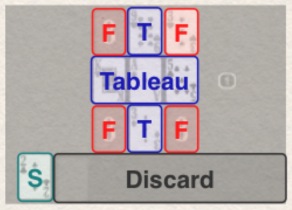 Foundation piles and Tableau piles arranged in a grid
Foundation piles and Tableau piles arranged in a grid
Foundation piles sit in the corners of the grid, and build up in suit until all cards of that suit are in the pile. The rest of the grid is formed with Tableau piles.
At the start of the game, a random card is dealt to one of the foundations, which becomes the starting value for all other foundations (after a king is played on a pile, you may play an Ace on it, to wrap around)
The Tableau piles in the center, may be built down, ignoring suit, and only one card may be moved at a time. When spaces form, you may play any card to them, which can be really useful as a staging area for combing two smaller piles into a larger one, when you are able. The more gaps you’re able to create and keep, the more chances there are to combine piles in the Tableau, which can be very useful.
During play, the top card of the stock is always available, it may be played into the grid of Tableau and Foundation, or simply moved to the discard pile – the top card of the discard pile is always available for play. Since there are no redeals in this game, so once a card is placed to the Discard pile, and covered with other cards, you can’t get at it, without first clearing the cards on top. As a result, you often don’t want to fill gaps in the Tableau quickly, it’s useful to have them available in case cards come up in the stock that you will need soon on a Foundation pile, and will probably block that foundation if they’re buried in the Discard pile.
The best strategy seems to be to make a space in the Tableau as soon as possible, using them to combine piles into as few piles as possible (making more gaps). After that, going through the stock, moving cards to the discard – playing onto Tableau piles when possible – saving spaces for cards that will be needed soon by Foundation piles, so they’re not buried in the discard. Essentially, the more cards that get into the Tableau, and not the Discard, the more chance you have to win.
Available now in Allgood Solitaire for OS X, and in the upcoming release of Allgood Solitaire for iPad.
